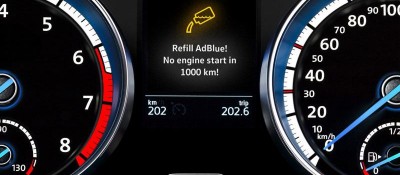WHAT IS ADBLUE / SCR ?
WHAT IS A DIESEL ADBLUE / SCR ? Selective catalytic reduction is used to reduce nitrogen oxides in exhaust gases produced during combustion in a diesel engine. The nitrogen oxides in the exhaust gas cannot be converted into harmless substances by simple oxidation. They are rendered harmless by the reduction, i.e. the release of oxygen, which converts the nitrogen oxide into the desired nitrogen. Selective catalytic reduction (SCR) has been used in industry for decades to reduce nitrogen oxide. Roughly speaking, the system consists of the SCR catalysts and a metering system including the necessary sensors for measuring the nitrogen oxides. This technology injects ammonia into the exhaust system upstream of the SCR catalytic converter using a so-called carrier called ADBlue ®. With this technology, the nitrogen oxides can be selectively reduced at a rate of up to 90% and converted into elemental nitrogen. To deactivate the ADBlue ® system in the engine control unit, the technical aspects for selective reduction must be known. The components required for this in the vehicle are a metering module incl. control unit, an injector for injecting the urea into the exhaust system, the necessary ADBlue ® lines and the sensors for measuring nitrogen oxides, NOx and temperature sensors. Many SCR systems on the market are based on a sensor-based closed loop control strategy. Two NOx sensors are used for this, before and after the NOx catalytic converter. With this procedure, an actual setpoint can be permanently measured and immediate control can take place. All these measures involve complex software, which is located in the engine control unit and in the own ADBlue ® control unit. Since the SCR system is a very complex system with different sensors, modules, pumps and lines, these systems are error-prone and difficult to maintain due to their complexity. These systems are not used in motor sports. In countries with sub-zero temperatures, additional heating is required for the urea tank, as the freezing point of the solution is -11.5 °C. Urea must also be carried in a second, smaller tank. This tank must be refueled from time to time. From September 2015 it became known that vehicle manufacturers had integrated a cut-off device in vehicles to keep urea consumption low. For the driver, the use of ADBlue ® not only brings clean cars, but also possibly more effort and costs. Depending on the driving style, particularly sporty driving style or operation at high altitudes, refilling several times between maintenance dates may be necessary. If you don't care about refuelling the urea solution, you can stop with your vehicle, because a start is not possible with an empty tank. Another disadvantage are the entire catalytic converters installed in the exhaust system, which can lead to a loss of performance and increased costs, e.g. during repairs. Furthermore, problems may occur if the urea solution is not available or the SCR system no longer functions reliably. The consumption of the urea-water solution is about 2 to 8% of the amount of diesel fuel used. Our ADBlue ® delete service removes the ADBlue ® system from the vehicle's engine control unit. After removal, the vehicle drives like a system with ADBlue ®, without error messages and without the engine indicator light lighting up.

Vehicle Statistics
Whether you're looking for an economy or performance remap, get in touch with us to get a quote to remap your vehicle.

